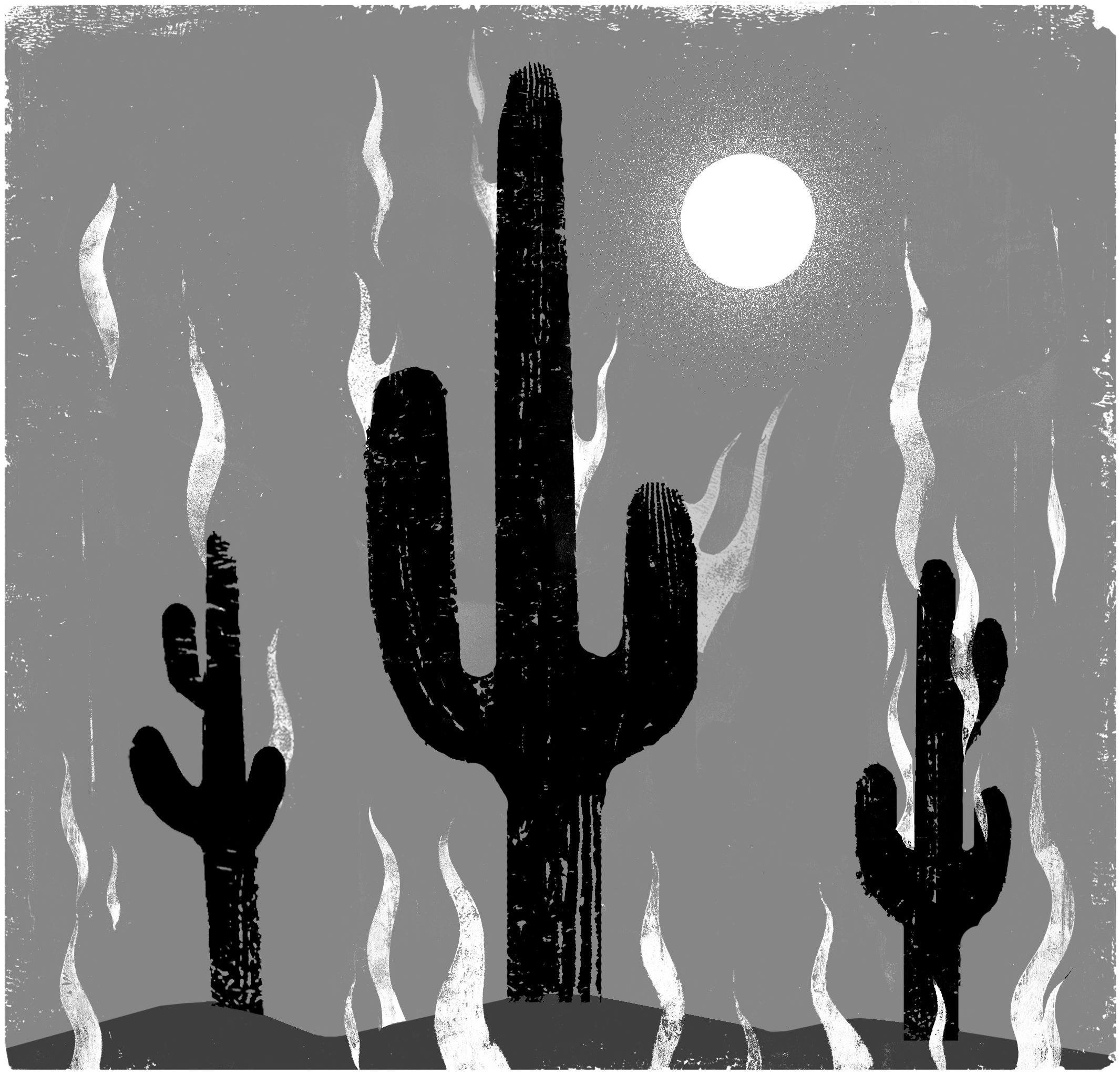Much of the American Southwest is in its second decade of a sustained drought, accompanied by declining water supplies, intense forest fires, and heat waves. Scientists and citizens are increasingly concerned that this is the onset of global warming in the region. Our recent Assessment of Climate Change in the Southwest United States brought together scientists across the region to evaluate the latest information on how the environment is changing, the impacts on ecosystems and society, and what the choices might be for reducing the risks.
The assessment is sobering.
In the first decade of the 21st century, regional average annual temperatures were 1.4 degrees warmer than in the 20th century. That might not sound like much, but even this temperature increase affects the growth of vegetation and the demands on air conditioning and water supplies, and has the effect of lowering the entire region 250 feet. Since 2000, the flow of the Colorado River is 16 percent less than in the previous 100 years, the Rio Grande has dropped by 23 percent and the Sacramento-San Joaquin fell by 37 percent. Across the West, snow is melting up to a month earlier and the area of federal lands burned in forest fires tripled compared to the 1970s. Western landscapes are being devastated, as beetles that thrive in warmer temperatures destroy millions of acres of drought-stressed pine trees.
Our recent assessment brought together scientists across the region to evaluate the latest information on how the environment is changing, the impacts on ecosystems and society, and what the choices might be for reducing the risks. The assessment is sobering.
The summer of 2013 brought many weeks of temperatures of 100-115 degrees to cities such as Phoenix and Las Vegas, and a demand for air conditioning that stressed energy supplies and hit many households with bills they could not afford. In Texas, three years of extreme drought has led to mandatory water use restrictions, irrigation curtailed to serve urban needs, ranchers selling off their herds, and estimated impacts of more than $8 billion in 2011 alone. Schools closed in Colorado as temperatures soared. These changes are threatening the health, homes, landscapes and economies of our region.
Scientists are confident that the Southwest will continue to warm if we do not control emissions of carbon dioxide and other gases that trap heat within our atmosphere. The region will be 1-4 degrees warmer by 2050 and as much as 8 degrees by the later part of the century—the equivalent of moving the region more than 400 miles southward. Sea levels along the California coast could rise two to three feet as oceans warm, and flows of major rivers such as the already over-allocated Colorado will decrease. It is hard to even imagine the impacts of these higher-end temperatures and sea levels, but our research suggests that ecosystems will shift, wildfires will burn more land and agricultural systems will need to adjust. Tropical pests and diseases, allergies and asthma could become more prevalent. Coastal storm surges and flood hazards—picture San Francisco International Airport underwater—will increase.
Climate change is framed as a global problem, with solutions seen in international and national efforts to reduce greenhouse gas emissions and stabilize global temperatures. The American Southwest could see itself as a victim of global environmental change with little responsibility or ability to control the climate changes we are experiencing. Or, the region can learn how to cope with the changes—to adapt our lives and landscapes to a warmer, more extreme climate over the next century. Climate adaptation is becoming a priority for several cities and institutions in the Southwest. Federal agencies that manage much of the land and water across the region (such as the Department of Interior) are reevaluating resource vulnerabilities and management in the light of a warming climate, and the city of Los Angeles is developing an adaptation strategy that includes mitigating urban heat through green space, energy efficiency and conserving water. The West is growing faster than the rest of the United States and climate change is concurrent with expansion of population, resource demands and land development.
We also know that the Southwest bears a disproportionate responsibility for the greenhouse gas emissions that are warming the world. In 2010 global greenhouse pollution totaled almost 45,000 million tons. The U.S. was responsible for about 15 percent of the total, with each American producing 22 tons compared to a global average of about 6 tons per person. The Southwest—Arizona, California, Colorado, Nevada, New Mexico, Texas, Utah—produced a quarter of U.S. emissions—more than 3.5 percent of the world’s total—with per capita emissions especially high in Texas (30 tons) and New Mexico (37 tons).
But the region can do more. California, for example, has proven that policies can be put in place to reduce the emissions altering the region’s climate. The state has made a commitment to cut emissions to 1990 levels by 2020. It has already reduced emissions to less than 12 tons per person, through investments and regulation in energy efficiency, renewables, and automobile mileage standards.
Individuals’ efforts to reduce their carbon footprints in the Southwest include household solar, water conservation, and smaller more efficient vehicles, but personal action and behavior can be costly for the less well off, and only make a modest contribution to mitigating climate change. In addition to the efforts of individuals, we need serious action by industry and large public-sector and private-sector emissions sources. The Southwest hosts five of the 20 largest point sources of emissions in the country, including the Navajo and Four Corners generating stations on the Navajo Nation in northern Arizona and New Mexico. These coal-fired plants are important to the regional economy and employment and provide power to the wider region, including the energy needed to power the pumping of Colorado River water to southern Arizona.
How can we reconcile the continued use of these power plants with the risks of climate change in the Southwest? We need to accelerate the development and implementation of lower carbon sources of energy—such as large-scale solar—that support economies and livelihoods more sustainably. We can invest in improvements in the efficiency of the electric power grid and our homes and cars. These investments can reduce emissions, aid power companies in meeting peak load demands, and empower the region’s citizens through a direct stake in contributing to reducing the climate change problem.
The bottom line is that we need planning, technical know-how and political will to develop choices and implement actions that benefit society and the environment. Sidestepping the issue will only continue to raise the ultimate cost.
Diana Liverman is the co-director of the Institute of the Environment at the University of Arizona in Tuscon. Gregg Garfin is deputy director for science translation and outreach at the institute and executive editor of the Assessment for Climate Change in the Southwest United States.





0 Comments